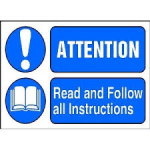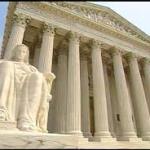 Intellectual Property law firms often receive substantive documents, including original applications and amendments, with “instructions” from their client to file the paper in the USPTO, essentially as is.
Intellectual Property law firms often receive substantive documents, including original applications and amendments, with “instructions” from their client to file the paper in the USPTO, essentially as is.
And just as often, IP counsel dutifully follow their clients’ orders and simply have a non-lawyer “clean up” the document so it “looks” right and, without any substantive review by counsel, sign and file the paper in the USPTO. Indeed, clients who engage in large volume patent filings may view their U.S. counsel as being, in essence, glorified mail drops through which non-practitioner clients provide the substantive legal services.
Such practices are usually driven by concern about cost savings by the client. The problem, however, is that U.S. patent attorneys, patent agents, and legal managers in Intellectual Property law firms that blindly follow their clients’ “instructions” or simply rely on their clients for preparing substantive work product may be violating the ethics rules of the USPTO and are subject to professional discipline by the Office of Enrollment and Discipline.
To be sure, lawyers owe their clients a duty of competent representation. See ABA Model Rule 1.1. As noted in one of my favorite “go to” resources,”[i]t is no accident that the first Model Rule requires competence, for the drafters of the Model Rules believed that the first rule of legal ethics is competence.” The USPTO’s Rules of Professional Conduct likewise places the duty of competence right at the top. See 37 C.F.R. § 11.101.
 For those practitioners who fall within the disciplinary jurisdiction of the USPTO, “competence” means “the legal, scientific and technical knowledge, skill, thoroughness and preparation reasonably necessary for the representation.” In addition, it is a Black Letter principle of professionalism that a lawyer “shall not” permit their client “to direct or regulate the lawyer’s professional judgment.” ABA Model Rule 5.4(c); 37 C.F.R. § 11.504(c). This is sometimes referred to as the “independent judgment” rule.
For those practitioners who fall within the disciplinary jurisdiction of the USPTO, “competence” means “the legal, scientific and technical knowledge, skill, thoroughness and preparation reasonably necessary for the representation.” In addition, it is a Black Letter principle of professionalism that a lawyer “shall not” permit their client “to direct or regulate the lawyer’s professional judgment.” ABA Model Rule 5.4(c); 37 C.F.R. § 11.504(c). This is sometimes referred to as the “independent judgment” rule.
Which brings us to the matter of Howard Shipley. Mr. Shipley is an experienced patent practitioner working for a large law firm in Washington, D.C. He signed and caused to be filed a petition for writ of certiorari in the United States Supreme Court on behalf of his foreign client, Sigram Schindler Beteiligungsgesellschaft MBH. The problem, however, was that the client drafted the bulk of the petition and demanded that the lawyer file it (under the lawyer’s signature), essentially as is. To make matters worse, it was obvious by anyone who read the petition that it was not – could not have been – drafted by a lawyer (at least not a competent, English-speaking one). On the contrary, the petition was legal-factual “mumbo jumbo.”
One could tell from the outset that Shipley’s petition was “different.” The question presented was:
Does the US Constitution, in legal decisions based on 35 USC §§ 101/102/103/112, require instantly avoiding the inevitable legal errors in construing incomplete and vague classical claim constructions – especially for “emerging technology claim(ed invention)s, ET CIs” – by construing for them the complete/concise refined claim constructions of the Supreme Court’s KSR/Bilski/Mayo/Myriad/Biosig/Alice line of unanimous precedents framework, or does the US Constitution for such decisions entitle any public institution to refrain, for ET CIs, for a time it feels feasible, from proceeding as these Supreme Court precedents require – or meeting its requirements just by some lip-service – and in the meantime to construe incomplete classical claim constructions, notwithstanding their implied legal errors?
Unfortunately for Mr. Shipley, his client, and his law firm, the petition only gets worse. For example, one of the arguments (and I am not making this up) is:
II.A Practical Advantages of a CI’s
Refined Claim Construction:
- Its Automatic Guidance in Construing it,
- its Much Higher Legal Safety, and
- its Increase of Professional Efficiency.
[121 S.II/III] tell: “{∀SPL test} ≡ FSTP-Test” 7.a) Thus, familiarity 7.b) with the FSTP-Test8) pays. It tests, ∀interpretations/TT.0s of a CI, their inventive concept sets satisfying ∀necessary ˄ sufficient and precise legal criteria 6) for CI’s passing its SPL test. For SPL testing a CI, the FSTP-Test hence needs ∀TT.0s of CI ∀ their compound inventive concepts and ∀ their elementary inventive concepts – as recognized and input by the user. Its fully automatic guidance greatly sharpens his/her such cognition processes by forcing him/her – by prompting to input blindly trusted answers to ∀ questions of the FSTPTest as to ∀TT.0s of a CI – to iteratively identify ●) ∀ inventive concepts of TT.0 and to check ●) ∀ their necessary ˄ sufficient relations for their holding6) ftn 8) is the FSTP-Test from [121 8.b) ], fixed 7.c) by test.9 to model Alice concisely.
For those readers who might have been lost by the above-quoted language, the petition clarifies this part of the argument with helpful footnote 7, which explains:
7.a) AIT views the FSTP-Test as a “program scheme”, the set of ∀ interpretations of which = {∀ SPL test}. Yet, the term “FSTP-Test” also stands for implicitly using some default interpretation, e.g. “process all information on a line prior to proceeding to the next line”. .b) While the FSTP-Test8), at a first look seems complicated, intuitively grasping it is vastly trivial, as its • structure evidently mirrors SPL 1:1, just as its • terms’ meanings principally mirror those used by Mayo/Biosig/Alice – in spite of these FSTP terms being CI independent and their meanings CI specific..c) For simplicity, TT.0 has no index in FSTP-Test8)
Another part of the petition argues:
On a CI the FSTP-Test works interpretation/TT.0/S0-wise6), with |{TT.0}|=|{S0}|≥1 (see 1)(b)). A S0={BED-crCk/1≤k≤K0 ≥N≥1} is a “generative set” of an interpretation/TT.0 of CI, derived from an N-tupel {BAD-crCn/1≤n≤N}, with the same N ∀ TT.0s of CI. Any BAD-crCn is 1 of the N compound inventive concepts, CI’s specification discloses for any TT.0 [5]. Any just of (= “justification of”) input 11) may comprise, for TT.0, several nonredundant instantiations, which are managed separately by the FSTP-Test11).
And so it goes, on an on, for some 36 pages. Not surprisingly, the petition was denied.
Then came the really bad news. On December 8, 2014, the Supreme Court issued an order to show cause why Mr. Shipley “should not be sanctioned for his conduct as a member of the Bar of [the Supreme] Court in connection with the petition for a writ of certiorari in No. 14-424, Sigram Schindler Beteiligungsgesellschaft MBH v. Lee.” See In the Matter of Discipline of Howard Neil Shipley, No. D-2827, Dec. 8, 2014 Order.
 While the Court’s show cause order fails to specify the “conduct” that the Court found offensive, presumably it was the filing of incoherent gibberish by a seasoned practitioner and member of the Bar of the Supreme Court.
While the Court’s show cause order fails to specify the “conduct” that the Court found offensive, presumably it was the filing of incoherent gibberish by a seasoned practitioner and member of the Bar of the Supreme Court.
Normally an attorney is disciplined by the Supreme Court based upon reciprocal discipline; that is, the attorney is disbarred or suspended by another jurisdiction and the Supreme Court simply imposes the same discipline. Initiation of de novo discipline by the Supreme Court is a relatively rare occurrence. In fact, I am unaware of a single case in the history of the Supreme Court where the Court initiated ethical discipline against a patent practitioner arising from the practice of patent law.
Rare or not, the Court has significant latitude in imposing discipline. Rule 8 of the Supreme Court, entitled “Disbarment and Disciplinary Action,” states as follows:
1.Whenever a member of the Bar of this Court … has engaged in conduct unbecoming a member of the Bar of this Court, the Court will enter an order suspending that member from practice before this Court and affording the member an opportunity to show cause, within 40 days, why a disbarment order should not be entered. Upon response, or if no response is timely filed, the Court will enter an appropriate order.
2.After reasonable notice and an opportunity to show cause why disciplinary action should not be taken, and after a hearing if material facts are in dispute, the Court may take any appropriate disciplinary action against any attorney who is admitted to practice before it for conduct unbecoming a member of the Bar or for failure to comply with these Rules or any Rule or order of the Court.
On February 20, 2015, Mr. Shipley filed his response to the show cause order. His response admitted that the client “significantly contributed” or was the “primary author” of the submission. The response noted that, “Mr. Shipley and Foley & Lardner have represented Dr. Schindler’s companies for nearly a decade.” The Response explained that the client “insisted that the petition be filed using his preferred locutions, acronyms, and prose, and he [the client] retained close control over the substance of the petition.” The Response further argued that Mr. Shipley was faced with a “difficult choice between (1) filing an unorthodox petition that reflected his client’s work product; or (2) withdrawing from the representation of his client of several years.”
The Response further stated that “the final product was certainly not what Mr. Shipley would have filed if he were representing a more deferential client, he and his colleagues made good-faith efforts to accommodate both their client’s intense desire to control the substance of the petition and the duties they owed to this Court as members of the Bar.” Mr. Shipley framed this as a “duty of loyalty” issue, stating that he was well aware of the “competing demands of the duty of loyalty that he owed his client and the duty that he owed th[e] Court as a member of the Supreme Court Bar,” but chose to prioritize one over another.
Casting the matter as a duty of loyalty issue suggests that the duty of loyalty supersedes the duties of competence and independent professional judgment. I am unaware of any legal precedent that supports this proposition. On the contrary, this should have been a no brainer for counsel — which is perhaps the point the Supreme Court is making with its show cause order.
Simply put, a lawyer’s professional judgment cannot be compromised by a difficult client. And if the client insists on drafting and filing, under the lawyer’s signature, a brief that is incomprehensible, the lawyer has an ethical duty to try to talk sense into the client. Failing that, counsel has no other choice but to decline to file the paper. The attorney can explain the ramifications to the client, but if a client chooses to follow a path that requires the lawyer to abrogate his ethical duties, then counsel’s duty to the Court, to the legal profession, and to his client, outweigh any putative issue of “loyalty.” Further still, allowing the client to prepare a substantive brief under the lawyer’s signature could be construed as aiding and abetting the unauthorized practice of law, which opens both counsel and client to criminal exposure.
Independent professional judgment cannot be outweighed by the “demands” of a difficult client. The duty of loyalty does not give carte blanche for counsel to do whatever their client says. The duty of independent professional judgment, as well as the duty of competence, require the lawyer “Just Say No” to the client, difficult or not, long-term or not, prejudicial to the client or not.
How the Supreme Court rules on the show cause order could have a dramatic affect on Mr. Shipley’s right to practice law in D.C., Virginia, and the USPTO, where he is presently licensed. Pursuant to the USPTO’s rule on reciprocal discipline, 37 C.F.R. § 11.24(a), a practitioner who receives public discipline from another jurisdiction “shall” receive the same discipline in the USPTO unless the practitioner can show by clear and convincing evidence that he was denied due process in the prior disciplinary proceeding, imposition of the same discipline would result in a grave injustice, or the first disciplinary proceeding suffered from an insufficiency of proof. If the Supreme Court suspends or disbars Mr. Shipley, the USPTO very likely will follow suit and impose identical discipline.
Which brings us back to the practice of intellectual property prosecution by many law firms. IP firms often receive patent applications, amendments, and other substantive papers that are written by their clients or other non-practitioners. Often those papers are accompanied by the client’s “instructions” on what to do.
A patent attorney who simply cuts and pastes the client’s words, attaches the lawyer’s signature, and files the client’s work product in the USPTO, fails to provide competent representation or exercise independent professional judgment. Whether it is a matter of economics, laziness, or simply lack of knowledge of their professional obligation, it is unethical for a lawyer to blindly do whatever the client says. IP practitioners and law firms who think they are providing ethical representation to their prosecution clients by simply following client’s “instructions” should think again. Just ask Mr. Shipley.